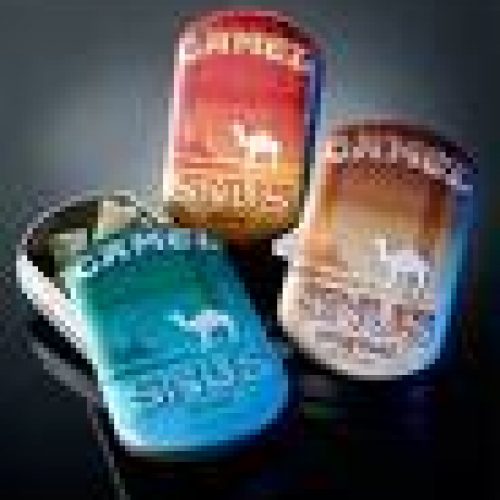What FDA MRTP Status for General Snus Really Means
On a Monday conference call with FDA, Swedish Match US was blind-sided. FDA said there could be good news concerning the Modified Risk Tobacco Product (MRTP) application for General Snus products sold in the US but warned SMUS not to say anything yet as FDA could change it’s mind.
An information lock-down went into effect at their Virginia headquarters and the waiting began. Swedish Match didn’t have to wait long. The next day, October 22 2019, FDA announced that all eight of the submitted General Snus products had been the first, and to date, only tobacco products approved for MRTP status as reduced risk tobacco products.
In FDA first, General Snus Declared Reduced Risk compared to cigarettes
Instead of the required use of four cigarette warning statements in General Snus advertising and marketing materials, Swedish Match would be the only company permitted to state that “Using General Snus instead of cigarettes puts you at lower risk of mouth cancer, heart disease, lung cancer, stroke, emphysema, and chronic bronchitis.”
As mundane as this statement may sound, the significance of it can not be overstated. The eight approved General Snus products will be the first tobacco products to secure the modified risk designation and right to market the products as a less harmful alternative to cigarettes.
MRTP for General Snus was a long time coming
My first article announcing the submission of the General Snus MRTPA by Swedish Match to FDA was written in June of 2014… yes, 2014.
Over the next 5+ years, hundreds of thousands of pages of documentation, studies, focus groups, government hearings, public comment periods, and requests for clarification were submitted, declined and resubmitted.
Countless meetings and phone calls between Swedish Match and FDA occurred. There were scandals too when members of the FDA Tobacco Products Scientific Advisory Committee (TPSAC) were removed for conflicts of interest at a critical point of the process.
In 2019, Swedish Match and FDA had some conversations early in the year on technical issues followed in June by an informal meeting. That brings us to October 24th and then to today.
What happens now between Swedish Match and FDA?
For the first 30 days after FDA’s approval, nothing visible to consumers will change. Swedish Match has 30 days to submit a post-MRTP marketing plan to FDA. If approved, SMUS can then launch advertising and marketing materials containing the new warning statement.
As I understand it, the warning labels on the actual General Snus cans will not change for at least the first year. However, I did receive a General Mint can graphic today which does not contain the top-of-can warning label so don’t hold me to this.
As you can imagine, Swedish Match was deluged with media requests yesterday. I, as Swedish Snus Ambassador to the United States, had an interview with Gerry Roerty, VP Legal & General Counsel, US Division yesterday.
MRTP status is very significant. Since this is the first time a Modified Risk Tobacco Product application has been approved, both Swedish Match and FDA are in uncharted waters.
Over 480,000 Americans die each year from illnesses directly tied to cigarette smoking. FDA does want MRTP to succeed but only for alternative products which substantially merit the designation.
Swedish Match is the perfect partner to work with FDA to establish and streamline the process for a number of reasons.
- The Swedish version of FDA decided in 1970 to begin regulating Swedish snus as a food product. This meant all ingredients had to be of food quality grade. The levels of potentially dangerous substances were slashed and monitored. Swedish Match instituted its own proprietary standard, GothiaTEK, which was even stricter than the Swedish government’s.
- In the almost 50 years of monitoring since then, there have been no documented cases of oral cancer, throat cancer, stomach cancer, lung disease, heart disease, stroke and other cigarette-associated illnesses directly attributed to snus use.
- Today, Sweden has among the highest percentage of tobacco users in Europe, but also has the lowest number of tobacco-related deaths of any European country. This paradox is referred to as “The Swedish Experience”.
I could keep adding bullet points all day to make my point but these three alone more than qualify General Snus to be able to confidently state “Using General Snus instead of cigarettes puts you at lower risk of mouth cancer, heart disease, lung cancer, stroke, emphysema, and chronic bronchitis.”
In partnership with FDA, Swedish Match will next establish post-market surveillance protocols including speaking directly with consumers on how they are reacting to a cigarette-to-snus switch. Adjustments will be made as necessary with benchmarks established at the one and two year points.
And so the journey continues until all nicotine-addicted cigarette smokers have either quit or moved to products approved as being less harmful than cigarettes…hopefully before they die from smoking.
LARRY WATERS
Swedish Snus Ambassador to the United States
Reporting for SnusCENTRAL.org
About author
You might also like
Camel and Marlboro: When it comes to Snus, you LOSE!
Now let’s talk about Snus: What the heck IS Snus, WHERE do you get it, WHY would you want it, and most importantly (to me), why am I so excited
Report from Tobacco Plus Expo 2009!
As a police escort led my armoured limousine down Canal Street towards the New Orleans Morial Convention Center, you could still see the signs of Hurricane Katrina. Scattered condemned buildings;
Skruf Snus in 2015: Buyer Be Aware
In April 2015, Skruf AB made a radical change to the snus they sold in Sweden. The tobacco used in the six Swedish market Skruf products was changed to 100% organic




